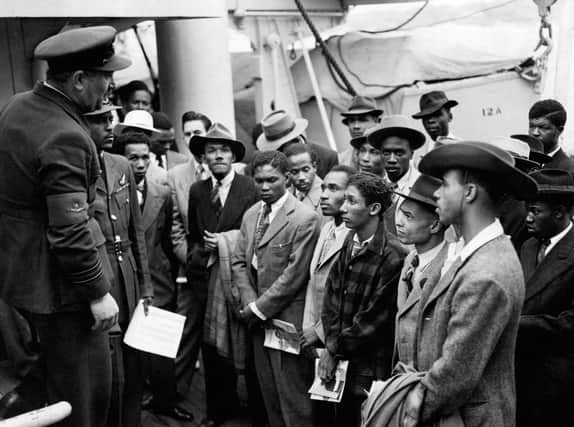Northern Lights: Sometimes attempts at inclusion can end up not being inclusive


This appears to be the situation regarding the council’s recent civic reception at the town hall to acknowledge the contributions from the Windrush Generation to the City of Sheffield.
In January 1957, my parents moved to Sheffield from Wiltshire, where they had initially lived after emigrating from Jamaica to the UK.
Advertisement
Hide AdAdvertisement
Hide AdThey settled in Sheffield, made it their home, and raised their children there. My parents are members of the Windrush Generation who responded to the call to come to the UK to meet a need that this country had for workers.
My dad passed away in 1997, however, after 66 years my mum still lives in Sheffield and worked in Sheffield up until her retirement.
That is why it was so disappointing for myself and my siblings that she was not invited to the civic reception.
The civic reception was held on the 75th anniversary of HMS Empire Windrush having left the shores of Jamaica with 1027 passengers and docking in the UK. All of whom had come to this country to help build it back up following World War 2. As well as to provide key work in the then, newly formed NHS.
Advertisement
Hide AdAdvertisement
Hide AdOn becoming aware of the event and contacting the council to let them know my mum had not received an invite, my sister was given an apology.
She was informed that they had reached out to churches and community groups. It was not clear which churches and community groups they reached out to, so my sister informed the person that our mum does not go to a church with a predominantly black congregation, she goes to a church that has a predominantly white one.
Also, she is a member of an Age UK group, which again has predominantly white members.
Oftentimes when an organisation seeks to reach what they consider ‘hard to reach’ members of the community, they will contact those organisations and establishments that cater for those members of the community.
Advertisement
Hide AdAdvertisement
Hide AdWhilst that in and of itself is a good thing, it can exclude those members of that community that don’t conform to the stereotype associated with them.
Approaching the media, religious, and community organisations of the groups they want to reach, enables them to access members of the community they would otherwise not have contact with.
Many organisations have great success with this approach when wanting to increase representation from marginalised groups. However, organisations also need to recognise that not all members of that particular demographic fit the stereotype and can also be reached through mainstream platforms.
The example given contrasts with the situation where organisations want to be inclusive but do not reach enough people from underrepresented groups because they do not reach out to them through the services that cater for their needs.
Advertisement
Hide AdAdvertisement
Hide AdAn example of this is a diversity conference that I once went to in London, the theme of which was mental health.
Given the overrepresentation of people from the global majority within the mental health system in this country, and given the diverse demographics of London, there was a glaringly, distinct lack of representation from the global majority.
As one of the few black people there, even white people commented about it to me because they had noticed it too.
It also appeared that they had not given attention to the needs of people attending with a disability, because one wheelchair user was subjected to a very awkward experience.
Advertisement
Hide AdAdvertisement
Hide AdI reached out to the organisation that organised the conference to give them feedback, something which they hopefully appreciated.
Particularly as they are an organisation that makes ‘loud’ claims about how they are improving inclusion.
With globalisation and increasingly more organisations working cross culturally across different continents, it can be even more challenging to get inclusion right.
On a recent talk that I did to one such global organisation about inclusive language, we explored how the words we use evolve over time.
Advertisement
Hide AdAdvertisement
Hide AdCertain words considered acceptable when I was a child are no longer appropriate now, yet in certain countries some of those words are still used.
Organisations are not always going to get it right, but the important thing is that when they don’t, they hold their hands up and acknowledge that they have not.
When this happens, they should look at what they need to learn in order to progress and not continue to make the same mistakes going forward.
To sum up, if you are in an organisation that wants to reach members of underrepresented groups, yes, reach out to those organisations and establishments that cater for them.
Advertisement
Hide AdAdvertisement
Hide AdHowever, remember, those members of the community could also be found in places that don’t fit the stereotype. So also focus on reaching them through mainstream establishments as well.
The inclusion landscape is an evolving one and as we become aware of those who are not being included, we need to look at what needs to change so that they are.